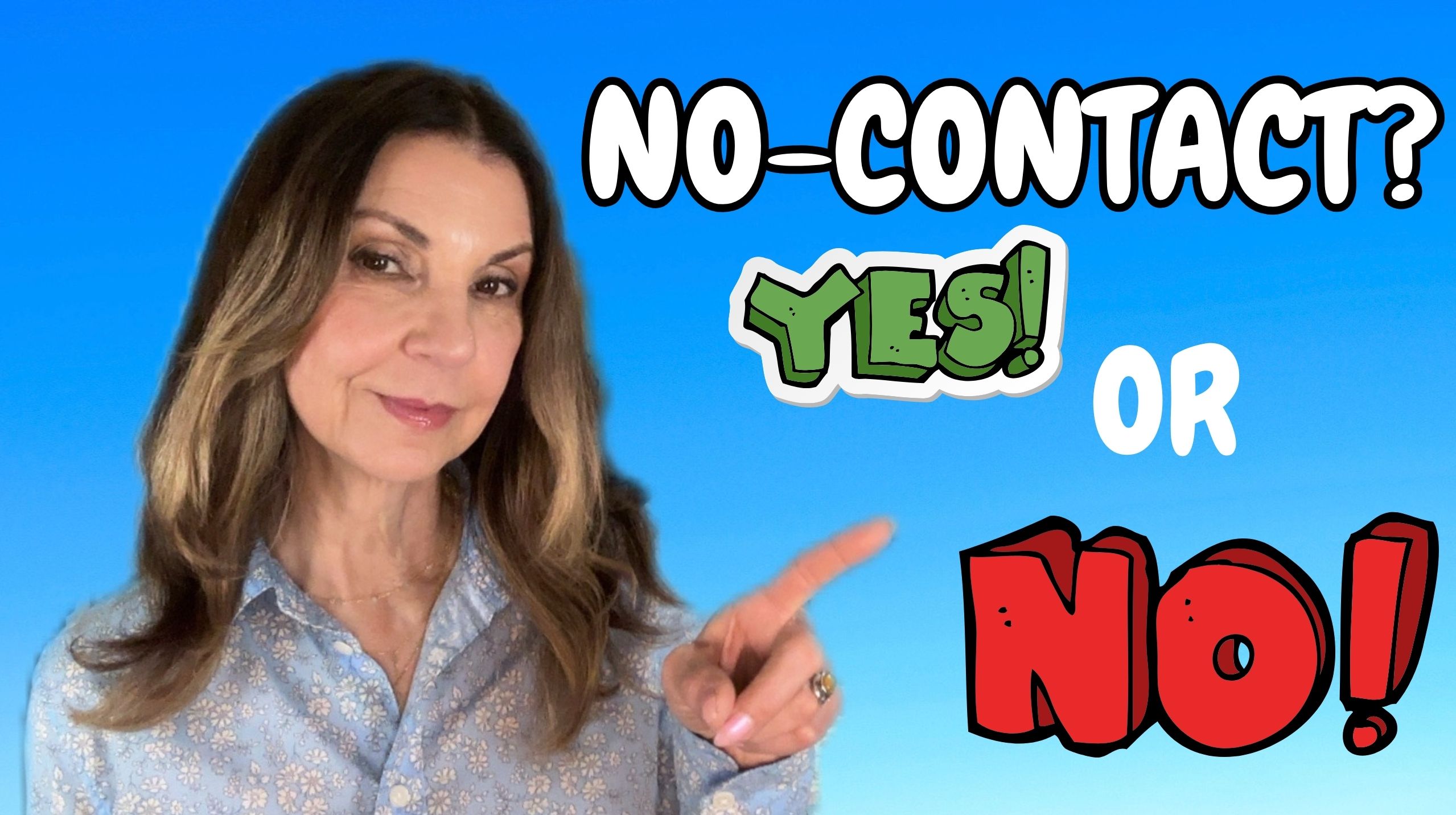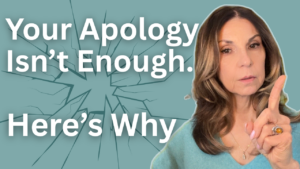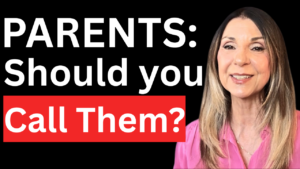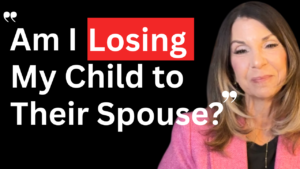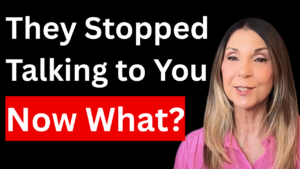The no-contact rule is a tactic for ending a toxic relationship by ceasing all further engagement with the other person. This includes in-person interactions, phone calls, texts, emails, social media, or third-party communication. It is usually used as a last resort when all other attempts to rectify the relationship have failed.
The no-contact rule can be implemented when any negative relationship ends. Many people find this to be a practical approach for creating emotional distance and, in certain circumstances, creating physical distance for self-protection amid the various safety challenges that can arise at the end of relationships.
Situations for Utilizing the No Contact Rule
- Parent with an untreated personality disorder
- Breaking free from a toxic or abusive family or living situation
- Leaving a financially, emotionally, or physically abusive spouse
- Ending a toxic relationship or abusive friendship
- Quitting a job with a toxic work environment
- Ending a relationship with a narcissist
- Having safety concerns following the end of a relationship
- Reassessing the future of a relationship
Benefits of Going No Contact
According to attachment theory, there are three stages to ending a relationship:
- Protest and attempts to re-establish contact.
- Despair and sadness.
- Eventually, detachment is achieved through reorganizing one’s priorities.
Using the no-contact rule can greatly assist with overcoming the first two stages of this process and getting to stage 3, where your detachment from negativity can begin.
It Gives You Time to Move Forward
Research has shown that remaining in contact can interfere with one’s ability to move on, leaving them stagnant. Therefore, separating from an individual who has chronically hurt you will shift the power back into your hands so you can move forward. Their lack of influence is essential as you decide what is best for you.
You Will Have the Space to Grieve
Saying goodbye to a relationship can create breakup grief, similar to the grief and loss a person may feel when mourning a death. Remaining close to a person has been shown to prolong emotional distress and get in the way of healing. You will need to make time and space to process the loss of attachment and what has been and grieve the image of what could have been.
You Can Assess Your Relationship(s)
Giving yourself distance from the relationship will allow you to assess the issues that led to its collapse. Consequently, you can identify ways of improving relationship skills to create more successful future relationships. Removing the toxic person as a desirable option also opens your mind to recognizing healthier alternatives. It could lead you back to those whom you may have previously withdrawn from, whether purposely or because the toxic person insisted on it.
It Gives You Time to Identify Boundaries
When you realize what went wrong, you can (re)discover healthy relationship boundaries. You can then practice confidently telling others about your boundaries and experience what it is like for people you love to respect them. If you were to remain in contact while trying to do this, the toxic person would only seek to minimize the boundaries you established, causing confusion and self-doubt.
You Can Begin to Break the Pattern
The no-contact rule can help people trapped in a repeated cycle of breaking up and making up. It allows you to step away from the unhealthy patterns routinely occurring within the relationship and evaluate their function in your life.
It Gets the Monkey Off Your Back
When individuals remove toxic people from their lives, they feel relieved. The stress and anxiety of trying to maintain a toxic relationship are exhausting, and studies have actually found that those in poor-quality relationships have an increased risk of developing a mental health condition, such as depression. When you cut off contact once and for all, you release the control that person has had over you and your life.
You Can Reconnect With Yourself
Many people find themselves holding off on completing meaningful tasks or working toward essential goals when a toxic relationship bogs them down. When a person removes themselves from a toxic relationship, they open themselves up to post-traumatic growth. Research has found that individuals who end a low-quality relationship often experience self-expansion and rediscovery.
It Helps Keep You Safe
If the person you have had no contact with has been violent or abusive, eliminating their ability to reach you may be the safest option. If necessary, you can look further into legal options prohibiting the person from contacting you.
Disadvantages of Going No Contact
Going no-contact can be incredibly tough. You will likely miss the person, feel lonely, and struggle with all the changes going no-contact requires. Additionally, you should be prepared for the possible consequences of cutting off contact with a person.
Possible Lack of Closure
Some may find that ending contact with the person who has caused them hurt is too finite if they are still hoping said person will provide them with closure. While specific individuals may find the closure they need through a personal exploration journey, others rely on continued contact, expecting to eventually learn the information they think they need to move on.
You Will Need to Change Up Routines
Depending on your situation, you may need to adjust your lifestyle to ensure your no-contact plans are successful. This might mean no longer visiting a favorite hangout spot, putting some distance between your mutual friend group or family members, or even just recognizing that life as you have known it will no longer look the same. It may be customary to dial the person’s number after a long day or to order a second cup of coffee on your way to work, but you will need to adjust your habits to fit this new way of operating.
Additional Losses May Follow
Unfortunately, you may lose other things and people in the process of going no contact. Be prepared for people to pick sides and believe fabricated versions of the story. For example, the person you have no contact with could encourage mutual contacts to exclude you from future events, information sharing, opportunities, etc.
There Can Be Pressure & Criticism From Others
Some people in your life may not fully understand your reasoning for choosing to go no contact, but remember that that is okay—they don’t need to understand. These naysayers could try to vilify you or minimize your experiences and persuade you to reconsider your decision since they can’t appreciate things from your perspective.
It’s Hard
The no-contact rule is undoubtedly a difficult thing to do. You will face many inner and outer conflicts throughout this process. This is why going with no contact is often the last recommended option for ending a toxic relationship.
The Science Behind Going No Contact
A person can become attached to a toxic individual through a process called trauma bonding, where the relationship is centered around intermittent abuse in combination with intermittent love-bombing and affection. This confusing dynamic keeps a person attached to the toxic person in a kind of psychological push-pull effect.
This is why attempting to sever a trauma-bonded relationship can feel equivalent to breaking an addiction. The person who is bonded experiences a chemical draw to the other, much like a person with an addiction to their drug, and profoundly craves the rush of dopamine and oxytocin they get from the abuse. Going cold turkey for the person with an addiction stops the chemical rush, and going no contact will have the same effect for the person seeking freedom from trauma bonding.
How to Use the No Contact Rule
Once you implement the no-contact rule, you must follow it as closely as possible to achieve the desired effect. If you happen to slip up and make contact, recognize that you are human and mistakes will happen, especially when working through something as powerful as breaking attachments. Refocus yourself on the goal and resume your no-contact rule.
1. Let The Person Know
It is best to inform the person you will have no contact with through a short and direct text or email so they do not have the opportunity to argue or persuade you out of your decision. You can say something like:
“I have decided it is best for me if we no longer contact each other. I will not be responding to any further correspondence from you, and I would appreciate it if you respect my decision.”
You do not need to explain or justify your reasoning behind the decision. Suppose the relationship has reached the point of choosing to go without contact. In that case, the person likely already knows what the issues are and has repeatedly decided not to remedy their side of things to prevent this from happening.
2. No Meeting Up With, Calling, or Texting
No contact is an all-or-nothing approach that must include all forms of communication. There cannot be any exchanges in any form, with no exceptions. When a person is rejected, which the no contact rule can be interpreted as by some, they are bound to experience a range of emotional and behavioral responses. Remaining in any kind of contact with this person only serves to further entangle yourself, along with confusing them about your intentions for the relationship.
Researchers studying rejection have found that those rejected become preoccupied with thoughts about the rejecter and obsessively crave an emotional connection with them after they end the relationship. Ending all forms of communication will keep you safe from any unpredictable, potentially dangerous behavior by the person.
3. No Indirect Contact
Contact must extend to only some areas where you could be presented with information about the individual. This means removing them from your social media accounts, not asking about them amongst shared contacts, and if they are brought up in conversation, either walking away or politely asking to change the topic to something else. Try not to ask about them from others, and do not seek out information on them via social media or internet searches. This will prevent you from healing because it will put you back into the cycle of caring more about them than they likely had about you.
4. No Reintegration Into Your Life
Even after time has passed and you feel healed, avoid bringing this person back into your life. After having experienced the devastating effects of this relationship, there is no point in giving this person a chance to re-enter your life. You have already tried that route, and if it had been an option for the relationship to work, it would have done so already. It may seem harsh, but you must continue to remain free from the chains of the toxic relationship.
Alternatives to the No Contact Rule
In situations where the relationship in question is not abusive or dangerous, there are alternative options to going no contact:
- Low Contact: Only engage when necessary (for example, in co-parenting situations).
- Therapy: Seek counseling or therapy to help address and resolve the issues in the relationship.
- Mediation: Work with a neutral third party to facilitate communication and conflict resolution.
- Taking a Break: Temporarily step back from the relationship to gain perspective and allow emotions to cool.
The no-contact rule can be an incredibly effective method for reclaiming your life from a toxic person. However, it is important to consider the pros and cons and to approach the decision thoughtfully, ensuring that it is the best course of action for your unique situation.
1. Beeden, K. (2022, January 23). The hard truth about going no contact with a parent.
2. Davis, S. (2023, January 30). Family estrangement: Going no contact.
3. Carmona, H. (2023, September 28). The no contact rule: What it is & when to use it.

